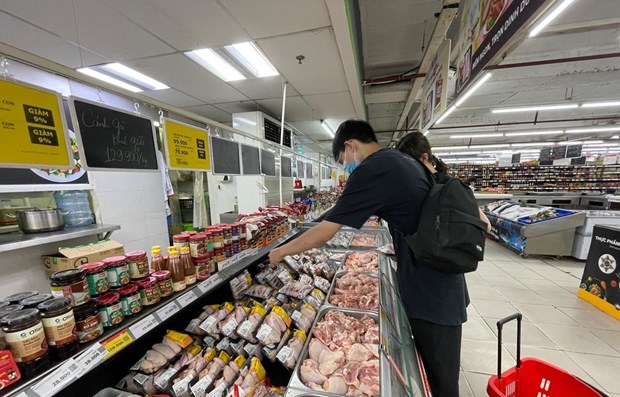Breeders must re-herd now to meet demand of lunar new year
Despite the difficulties caused by the COVID-19 pandemic, breeders in Việt Nam must re-herd now to ensure that demand for agricultural products can be met over the Tết (Lunar New Year) celebration that falls early February next year, an agricultural official has said.

Nguyễn Văn Trọng, Deputy Director of the Department of Livestock Production, said that 2021 was a difficult year for the livestock industry due to the impact of the COVID-19 pandemic.
The industry faced disrupted production, increased feed prices and a drop in the price of agriculture products which forced many to stop farming, he said.
Despite this, Việt Nam’s livestock industry maintained growth of 4-6 per cent, meeting the demand of the domestic market.
It is estimated that this year, Việt Nam produced 6.2 million tons of meat and 1.2 million tons of milk. If the COVID-19 pandemic remains under control, the livestock industry can ensure supply for the domestic market and maintain its exports, despite a reduced export volume and values.
“On the occasion of the lunar new year, the purchasing power in the market will increase by 15-20 per cent with increasing demand for food, which makes breeders more confident when re-herding,” Trọng said.
“If breeders don’t re-herd and expand their livestock production now, Việt Nam will face a shortage of meat in 4-5 months. The farmers make a profit when pork prices are VNĐ55,000-60,000 per kg,” said Trọng.
Currently, pork prices are around VNĐ 48,000-50,000 per kilo. Food enterprises with closed livestock production can turn a small profit, but farming households can not, Trọng said.
However, the livestock industry still faces difficulties in developing unsustainably as it lacks a closed chain supply from production to consumption, Trọng said.
The supply chain is often interrupted and the supply-demand balance is not stable, which leads to unstable product prices. Consequently, breeders suffer losses.
Meanwhile, the COVID-19 pandemic has shifted from urban areas to rural areas, Trọng said. In major cities like Hà Nội and HCM City, consumption has yet to return to normal, despite the cities entering the new normal stage.
Breeders also faced financial problems as it is difficult for them to access preferential loans from the government.
Major food companies in Việt Nam like CP, Hùng Nhơn, Dehus, TH True Milk and Dabaco have invested in closed production from breeding, slaughtering, processing and selling, which helped them be profitable.
Trọng said that while it is important to boost the development of large-scale industrial farms, small-scale farming households are still vital to ensuring the livelihoods of many Vietnamese families.
“To form production chains with sustainable development, farming households should cooperate with each other,” Trọng said.
Regarding the supply of goods for the upcoming Lunar New Year, the Ministry of Industry and Trade is closely monitoring market developments and the price of essential goods.
The ministry has also been coordinating with other ministries, branches and localities to ensure an adequate supply of goods, stable prices and to prevent shortages of goods in the run-up to the Tết holiday.
According to the Ministry of Agriculture and Rural Development, Việt Nam targets a pig population of about 29-30 million heads by 2030, including 2.5-2.8 million sows.
The number of pigs raised on industrial farms and plants accounts for over 70 per cent of the total pig population. The country expects to have about 400-450 million poultry, of which at least 60 per cent of them will have been raised with industrial methods.
Source: Vietnam News
